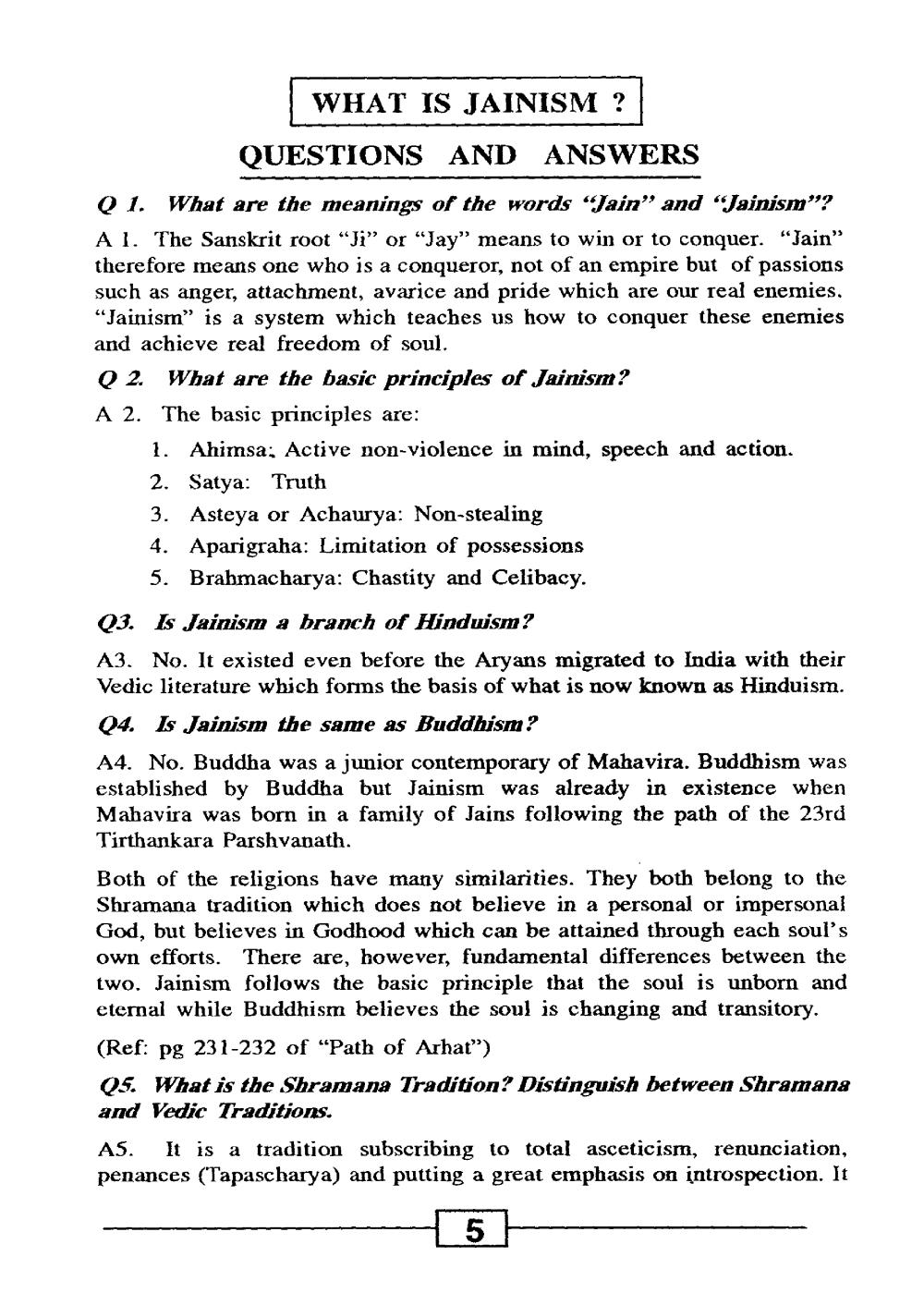________________
WHAT IS JAINISM ? QUESTIONS AND ANSWERS
01. What are the meanings of the words "Jain" and "Jainism"?
AI. The Sanskrit root "Ji" or "Jay" means to win or to conquer. "Jain" therefore means one who is a conqueror, not of an empire but of passions such as anger, attachment, avarice and pride which are our real enemies. "Jainism" is a system which teaches us how to conquer these enemies and achieve real freedom of soul. Q2. What are the basic principles of Jainism? A 2. The basic principles are:
1. Ahimsa, Active non-violence in mind, speech and action. 2. Satya: Truth 3. Asteya or Achaurya: Non-stealing 4. Aparigraha: Limitation of possessions
5. Brahmacharya: Chastity and Celibacy. Q3. Is Jainism a branch of Hinduism? A3. No. It existed even before the Aryans migrated to India with their Vedic literature which forms the basis of what is now known as Hinduism. Q4. Is Jainism the same as Buddhism? A4. No. Buddha was a junior contemporary of Mahavira. Buddhism was established by Buddha but Jainism was already in existence when Mahavira was born in a family of Jains following the path of the 23rd Tirthankara Parshvanath.
Both of the religions have many similarities. They both belong to the Shramana tradition which does not believe in a personal or impersonal God, but believes in Godhood which can be attained through each soul's own efforts. There are, however, fundamental differences between the two. Jainism follows the basic principle that the soul is unborn and eternal while Buddhism believes the soul is changing and transitory.
(Ref: pg 231-232 of “Path of Arhat”) 05. What is the Shramana Tradition? Distinguish between Shramana and Vedic Traditions. AS. It is a tradition subscribing to total asceticism, renunciation, penances (Tapascharya) and putting a great emphasis on introspection. It
*
5




